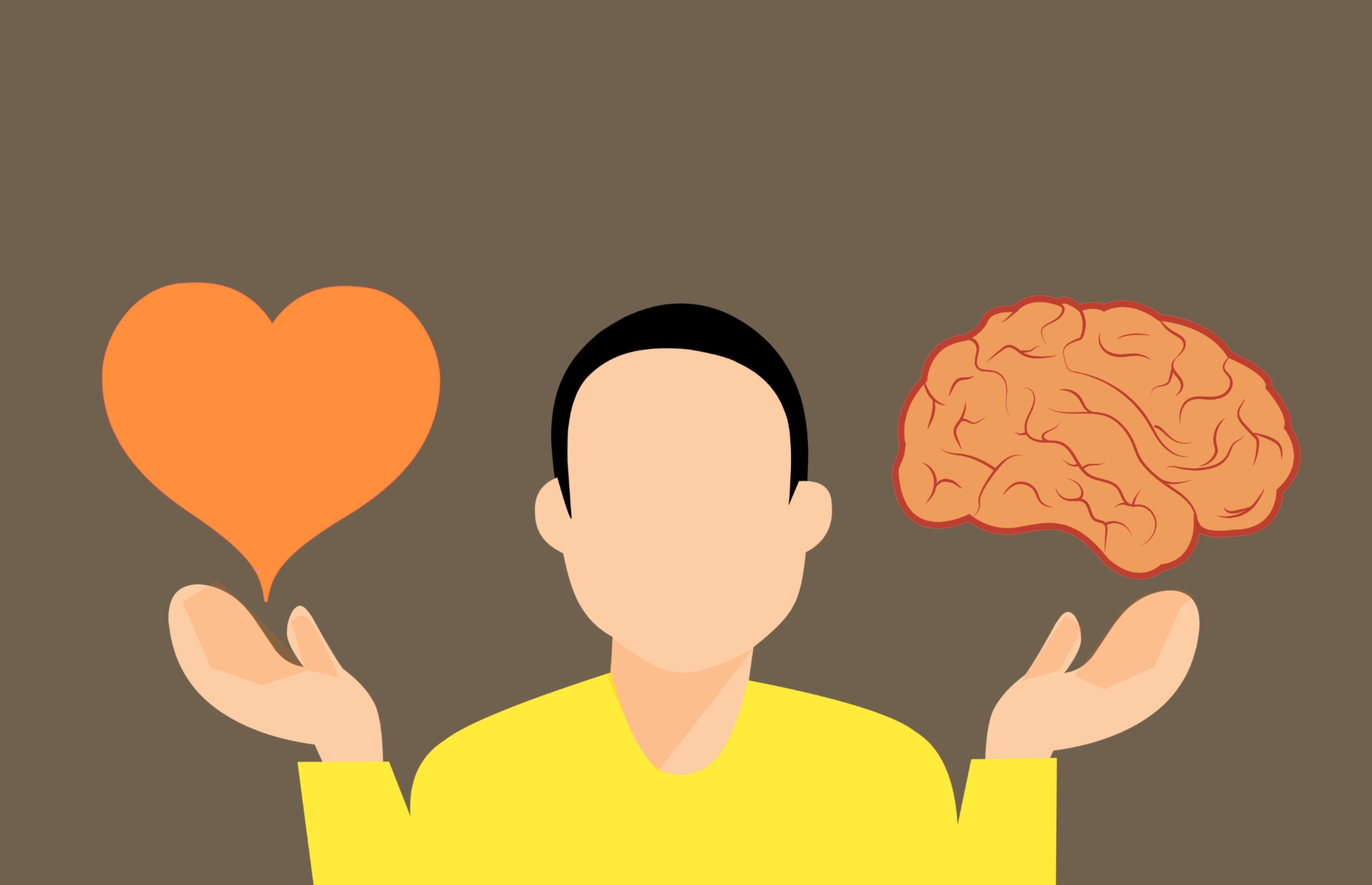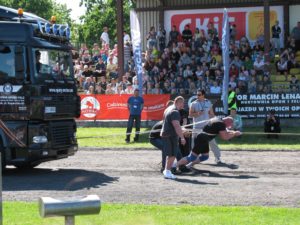You’re Only Human…
We often fixate on figuring out the ways we can enjoy exercise. If you’re a beginner, this is essential, and if you’re already training, it’s easy to be drawn in by the latest fad in the world of fitness.
You’re human and are often attracted to the new shiny thing out of the corner of your eye. Although yes, there are always things that can be improved upon; pouring through the endless number of available exercises in a bid to help your enjoy exercise and achieve results can lead to a daunting level of confusion and often stagnation.
Layer 2 – Emotive Layer
Now, this is where I have to grind you to a halt.
If you haven’t already, I would strongly advise you to read the first part of this series here:
In a nutshell, Layer 1 refers to your Prescriptive Layer, this is the stuff that you must do in order to be holistically healthy in your approach and to ensure optimal progression. For example, the movement archetypes need to be trained regularly to maintain a balanced body:
- Squat
- Hinge
- Unilateral/Lunging
- Horizontal Push
- Horizontal Pull
- Vertical Pull
- Vertical Push
- Walking/Locomotion

However, Layer 2, the Emotive (Decision-Making) Layer is where we focus on how to enjoy exercise, the topic of today’s article, is also something that must be discussed.
The main thing that separates the two?
Choice.
In Layer 1 – There is no choice. It’s prescriptive, meaning you do it whether you like it or not (trust me, 9 times out of 10, you’ll end up liking it anyway). This layer forms the core of any effective training program and if you’re lucky, the things you need to do, also happen to be the things you want to do.
Layer 2 – This is where we explore and where you’ve been granted the freedom to do what you please; adjusting your training plan so you can enjoy exercise.
An Example of Clarity – The Runner
You want to run a marathon. It’s been on your bucket list since the moment you bought a pair of trainers and you’ve decided that this is your year.
However, along the way when training in the past you’ve hit bump after bump.
Committing the amount of time to run just wasn’t plausible – You sustained an injury – then another – you didn’t lift any weights and sensed that your legs were too weak to carry you.
Layer 1 =
The Journey to Strong Method shows you that you’re missing a key core of training – lifting – More specifically lower body training in the form of squats, lunges, and hinges. The prescription shows you that loaded movement is the key to developing postural strength and the kind of efficiency you’ll need to cover long distances. Like it or not – you must do it.
*Note – there are hundreds of individuals that complete marathons and beyond without any strength training, however, if you want to be effective in your approach and reduce the risk of injury; strength training is essential.
Layer 2 =
Now that we’ve handled the stuff you don’t necessarily love to do – We know you love running and all forms of cardio. But how do you decide what to do, and how much of it?
WHAT?
Learn the topic.
The Holy Grail
For those of you who are unfamiliar, the Legend of the Holy Grail is based on a divine artifact, said to be the cup from which Jesus himself drank, during the last supper; the possession of which would grant the owner eternal life.

Over the years, the legend has been adjusted and tweaked to essentially represent the search for the unattainable. Whether it be the Fountain of Youth, the Apple Of Eden or any other, each legend refers to the desire of discovering the answer to all worldly problems.
In the realm of physical training, people often want to find the same answer.
The one thing that answers all. The one exercise that is “the best to build your glutes” or… “the best to build a stronger deadlift”.
Open and Closed
This leads us into a world in which we desire the answer to be in the form of a fixed, closed-loop system.
In other words, doing A will lead to B. And therefore doing more of A will lead to more of B. It’s simple and linear. Kind of like taking a drug. The cause of the headache (in the moment) is largely irrelevant. The pill will do its job to suppress the aching feeling and you can be on your merry way.

However, the human body and life itself is very much an open loop. There are contributing factors that come and go on a daily, minute by minute basis. This is the reason why the “One Size Fits All – Cookie Cutter” Approach will never work.
There has to be scope for adjustment for each person.
There has to be - Context
WHY?
Learn the science and theory.
When dealing with any aspect of physical training, there are laws that need to be adhered to. It can be summarised as the following:
“Training should focus on component specific progression, suited to the individual“
Layer 1 handles the Law of Specificity – It’s not always down to you and your decision-making to find what is required of you to complete the task at hand.
Within Layer 2 – The Emotive Layer, we deal with the element of choice; which is most strongly influenced by the Law of Individuality –
What works best for some, might not work best for others.
So, how do we decide what is best for you and what you should be doing?
Empirical World
In today’s society, we view science as the ultimate form of information. Millennia ago, we were open to the notion of Shamanism, Animism and the notion of an alternative spiritual realm. Although there is a wide scope of people who continue to believe this is the case, it is clear that Western Society prioritizes the notion of an evidence-based world.
Science itself is defined as “the intellectual and practical activity encompassing the systematic study of the structure and behavior of the physical and natural world through observation and experiment”.
Due to a large portion of our modern day life being influenced by advancements in science, the concepts of:
– Measurement
– Observation
– Validity
– Reliability
– Variability

And so on, have become deeply ingrained into our daily lives.
When a friend makes a claim about a new piece of information, we want to see evidence to support it.
When a politician puts forth a new bill amending a current law, we want to see the numbers to validate his argument.
3 Types of Evidence
Evidence, however, comes in 3 primary forms:
Empirical – Based purely on observation and measurement.
Anecdotal – Based on individual accounts drawn on from experience.
Theoretical – Based on the theory of a subject area without necessarily having a direct observation.
In today’s world, we prioritize empirical evidence to be the Gold Standard. This has led to the coined term, “Evidence-Based Practice”. However, this should be renamed as “Empirical Evidence-Based Practice” as people who follow this camp often refute the notion of individual experiences having any merit.
The Problem Itself
Herein lies the problem. It is very difficult to quantify individuality – particularly when it comes to experience.
The world of physical training has birthed technologies to track responses and continues to push forth the creation of a system that works for all.
However, the experience itself has, and always will be, down to the individual.
The ‘Individual’ System
Fortunately, when it comes to individuality, although we cannot create one-size fits all, we can identify the common variables that influence the individual’s experience.
1. Abilities + Efficiency of Execution
This is number one on the list for a reason. How experienced are you, and how well can you perform an exercise?
Let’s take the front squat as an example.
Empirical research has shown the front squat to show significantly greater recruitment of the erector spinae (2) and knee extensors (1, 6) and a similar level of lower body activation despite significantly lighter loads (3); when compared to the back squat.
Anecdotal evidence from the world of powerlifters also states it builds leg drive and develops the quadriceps more, forcing them to do a lot of the work.
However, from a technical standpoint, the front squat is relatively complex exercise to perform; particularly when compared to simpler alternatives.

If you can’t front squat, it doesn’t matter what the evidence suggests. You can’t do it yet and so you shouldn’t substitute it for a more suitable alternative to you as an individual.
In this instance, if you’ve followed the Layer System, Layer 1 will already have you covered in reference to what you need to do, so going light and practicing a new exercise shouldn’t hinder your progression.
It’s almost like you’re following two exercise programs simultaneously.
2. Genetics
Not as important as people think, but still has a small role to play.
Genetics influences everything from muscle fiber type distribution, to limb length. From mental makeup to central nervous system regulation. From digestion to body fat storage.

The only reason I don’t elaborate on this area is that it has been well studied and is already accepted as part of our current body of knowledge.
BE WARNED – One thing I will note in regard to genetics is that although it is very important, a large majority of the population have begun to use it as a “cop out” to avoid doing what they find most difficult or as an excuse to blame as a lack of progression.
Just because you don’t have the genetics to be Usain Bolt, doesn’t mean you can’t improve your speed. Just because you don’t have the genetics to break the 500kg deadlift, doesn’t mean you can’t improve your deadlift.
3. Enjoyment:
You don’t need research to tell me being able to enjoy exercise is a significant factor when it comes to adherence. And although I have spoken before about how this is one of the main reasons exercise motivation collapses in on itself, as much as I would love to say otherwise –
Enjoyment is a significant part of any aspect of life – particularly exercise adherence.
Interestingly enough, research has investigated this very topic; finding adherence to be associated with factors linked to enjoyment and competence (5).
Furthermore, research has found that systematically adjusting an individual’s emotional link to exercise was crucial in influencing exercise adherence (4).
This is your play time after all.
4. Logistics:
If you have a child at home and only have an hour to train, don’t be a moron and think that 10×10 is the best thing, just because someone else said so.
If you’re a student who has to study or a full-time worker who has a job to consider, it’s preposterous to think that dedicating more time than is needed in the gym is the priority. 
Unless you have a full intention of becoming a professional athlete (and even then, many of the “superstars” spent a large portion of their time doing other things) then you need to consider other aspects of life.
Training should be a huge part of your life, but not all of it.
Now don’t get me wrong, you will also have to adjust your schedule to meet what is required of you. In other words, you can’t say, “I can only train once per week”, and expect to be shredded, breaking world record deadlifts and learning how to fly.
It’s all about finding the balance.
HOW?
Learn the implementation.
Deciding what works best for you should be focused around being able to enjoy exercise; combined with your exercise prescription.
I know…that sounds cushy and all nicey-nice. But fundamentally, a huge aspect of motivation is enjoyment.
If you think you’re going to create long term change in the way you view exercise, whilst hating every second it…good luck with that.
The concept of physical training/fitness/exercise…whatever you want to call it – it should be necessary, mandatory, but also fun.
It should be balanced between things that are needed, as well as things you desire to do.
Yin and Yang
Referring to Ancient Chinese philosophy, life is all about balance. Everything is connected and relies on one another to maintain order.

50% of all forms of your physical training should be taken care of. Things you do that stem from evidence-based practice.
However, you should always satisfy the Emotive Side too. The things you truly want to do.
If it just so happens that they both align to be the same exercise modality – that’s fine. Just remember this cycle is an open loop. It is evolving, meaning so should your physical training.
If you need to do cardio yet you love lifting. Then you need to spend some time doing cardio. If all of a sudden you now prefer cardio, you can’t then abandon lifting.
For the majority of the population, I come across. They need strength training. And yet, they don’t do it. They only do the things that make them enjoy exercise.
Even more so, the people I see who do lift, don’t do the movement prep or the cardio or the the other stuff they need to do to maintain health and longevity.
Explore and Discover
The old adage of “You Don’t Know Until You Try It!” rings true.
Once you have satisfied the criteria required in Layer 1 (Prescriptive Layer) you’re free to explore the exercise world like you’re a complete beginner.
Provided you don’t go crazy, training to failure on every set and exposing yourself to greater injury risk, simply taking 1 day a week, or 20-30 minutes per training session to try a new exercise is the best way to go about it.
References
- Braidot, A. A., Brusa, M. H., Lestussi, F. E., & Parera, G. P. (2007). Biomechanics of front and back squat exercises. In Journal of Physics: Conference Series (Vol. 90, No. 1, p. 012009). IOP Publishing
- Comfort, P., Pearson, S. J., & Mather, D. (2011). An electromyographical comparison of trunk muscle activity during isometric trunk and dynamic strengthening exercises. The Journal of Strength & Conditioning Research, 25(1), 149-154.
- Contreras, B., Vigotsky, A. D., Schoenfeld, B. J., Beardsley, C., & Cronin, J. (2016). A comparison of gluteus maximus, biceps femoris, and vastus lateralis electromyography amplitude in the parallel, full, and front squat variations in resistance-trained females. Journal of applied biomechanics, 32(1), 16-22
- Jekauc, D. (2015). Enjoyment during exercise mediates the effects of an intervention on exercise adherence. Psychology, 6(01), 48.
- Richard, M., Christina, M. F., Deborah, L. S., Rubio, N., & Kennon, M. S. (1997). Intrinsic motivation and exercise adherence. Int J Sport Psychol, 28(4), 335-354.
- Yavuz, H. U., Erdağ, D., Amca, A. M., & Aritan, S. (2015). Kinematic and EMG activities during front and back squat variations in maximum loads. Journal of sports sciences, 33(10), 1058-1066





